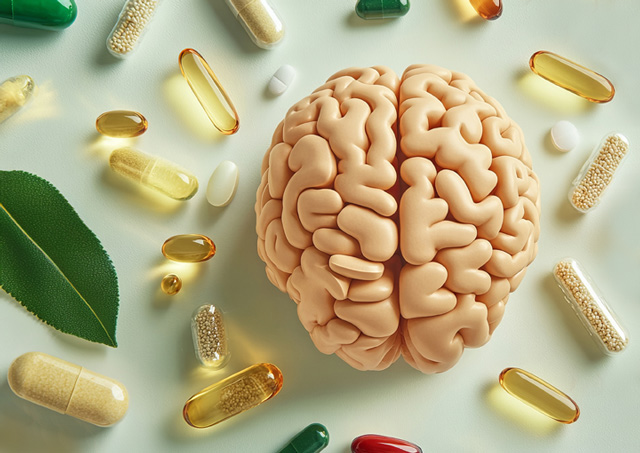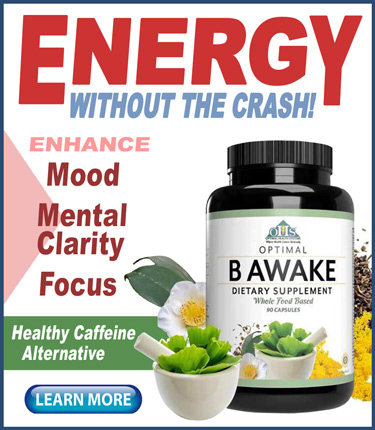In a new pre-clinical laboratory study, aging brain cells from elderly mice were shown to restore a youthful energy balance within 16 hours following a single treatment of green tea extract and Vitamin B3.
In a nod to possible future dementia treatment, the combination also cleared toxic protein buildup and improved survival by 22% in Alzheimer’s-model neurons.
In the promising lab-dish experiment, scientists used Epigallocatechin gallate (EGCG), a widely-studied antioxidant in green tea. EGCG is the most abundant antioxidant polyphenol in green tea. More specifically, it belongs to the subgroup known as flavonoids.
Meanwhile, Vitamin B3 has wide recognition as a nutrient that supports energy production and cellular metabolism.
The study was conducted at the University of California, Irvine, and the findings were published in GeroScience in August 2025.
Background
The research is centered on Guanosine-5′-triphosphate (GTP). In simple terms, GTP is one of the building blocks within a cell and serves as a molecular energy source essential for cleaning up waste. Without it, neurons struggle to remove damaged proteins and debris, which can build up and disrupt brain function.
Understanding GTP has created a leap forward in research on energy, brain function and aging. In the aging process, it is now known that as brain cells age they lose their ability to produce adequate levels of GTP.
That’s where the synergy of EGCG and Vitamin B2 come into play. Researchers at University of California discovered that a combination of EGCG and B3 provided a catalyst to rapidly restore lost cellular energy.
Study process
The Vitamin B3 boosted levels of NAD+, a molecule that supports cellular metabolism and serves as a precursor in GTP production. Meanwhile, in a simultaneous synergistic action, EGCG activated “Nrf2”—a cellular defense switch that turns on protective antioxidant genes.
Researchers observed within 30 minutes of treatment, Nrf2 began moving into the nucleus of neurons, where it activated known target genes related to energy production.
This response suggests the treatment provides both immediate antioxidant protection and a boost in cellular energy balance.
How the study was conducted
Researchers isolated brain cells from mice of three age groups—young, middle-aged and old). The researchers used both normal mice and ones genetically modified to develop Alzheimer’s-like symptoms.
were grown in laboratory conditions for 12-15 days, then treated with Vitamin B3 (nicotinamide), EGCG, or both together for 16 hours.
The scientists then used a fluorescent sensor called GEVAL to measure GTP levels (in other words, cellular energy) in real-time within living neurons.
This advanced microscopy system allowed the researchers to not only track energy levels, but also cellular cleanup processes and protein accumulation. These observations were carried out both before and after treatment.
Impressive results
The researchers recorded that aging caused significant drops in GTP levels (again, think cellular energy); additionally, Alzheimer’s model neurons showed earlier and more severe declines.
The combination treatment of Vitamin B3 and EGCG together restored GTP levels in old neurons to match those of young cells within the 16 hour period—demonstrating an increased benefit with the synergistic combination taken in tandem.
This energy restoration then caused improved autophagy—the cellular cleanup processes. The researchers noted a clearing of toxic protein clumps, a reduction in oxidative damage, and normalization of “cellular transport proteins” that had accumulated abnormally in aging neurons.
The energy improvement also increased overall cell survival rates by an impressive 22%.
Preliminary but promising
While promising, the study has limitations and researchers noted cautions in their study summary. It was pointed out that the study was conducted on neurons in petri dishes—not in living animals—and only measured short-term effects. It is unknown at this time whether the benefits would persist over time or in live animals and humans.
Still, the findings corroborate other studies that demonstrate the “brain energy” benefits of the EGCG and Vitamin B3 taken individually. The new study adds another dimension suggesting a “supercharged benefit” when taking the nutrients together.
Moreover, the findings show brain cell aging may be more reversible than previously believed. It appears long-recognized nutrients such as green tea and Vitamin B3 could one day be “prescribed” to protect brain health and support cellular cleanup that is known to falter with age.
– – –
The synergistic combination of green tea extract and Vitamin B3 can be found in the following Optimal Health Systems products:
– – –
Sources: GeroScience (Springer Nature), JustAPedia (Epigallocatechin gallate-EGCG).



